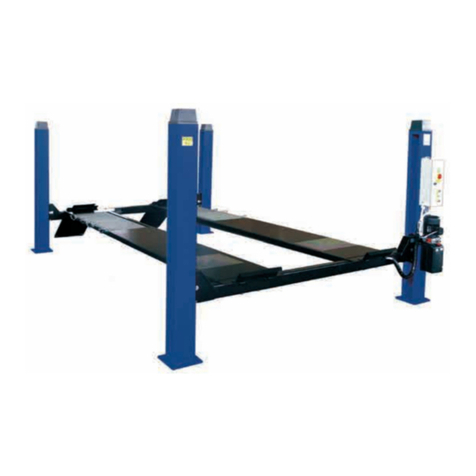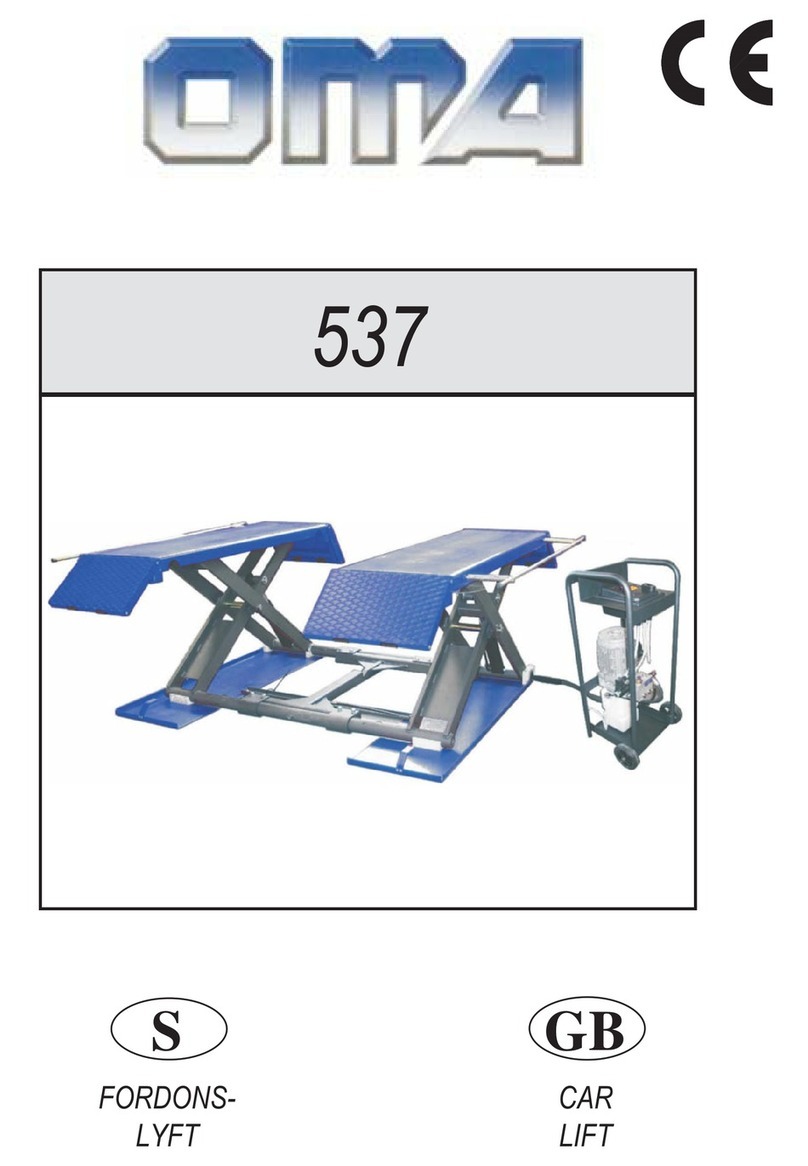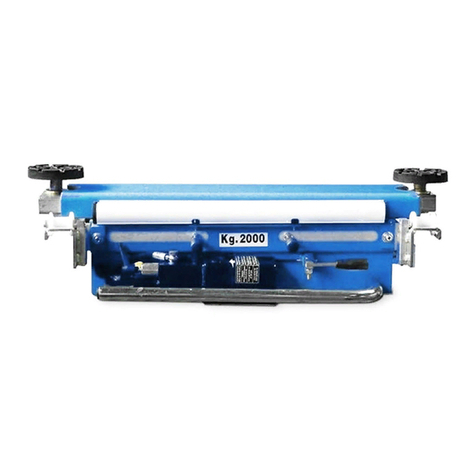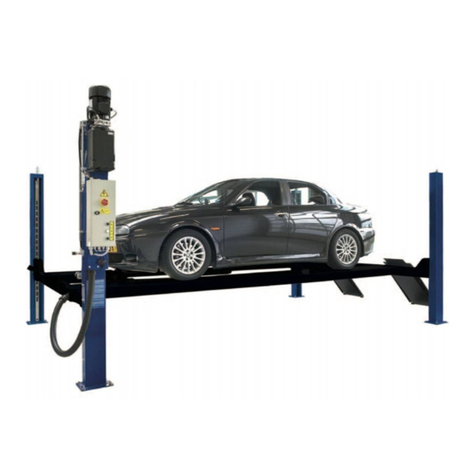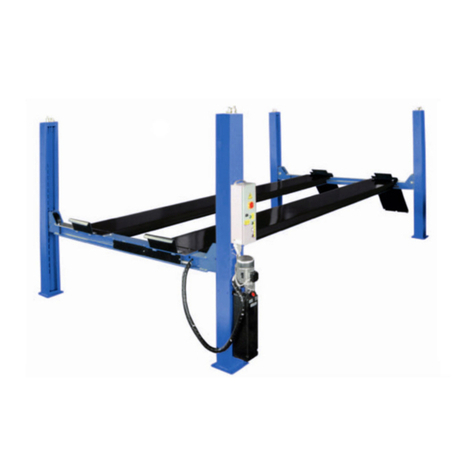
IMBALLAGGIO, TRASPORTO E
STOCCAGGIO.
LE OPERAZIONI DI IMBALLAGGIO, SOLLEVA-
MENTO, MOVIMENTAZIONE, TRASPORTO E DI-
SIMBALLO DEVONO ESSERE AFFIDATE ESCLU-
SIVAMENTE A PERSONALE CHE SIA ESPERTO
IN TALI OPERAZIONI E CHE CONOSCA BENE IL
SOLLEVATORE ED IL PRESENTE MANUALE
IMBALLAGGIO
Il sollevatore viene spedito montato, appoggiato su di un pianale in
legno e avvolto in un unico pacco confezionato con una lastra di
materiale termoretraibile e sigillato con due regge metalliche.
Il peso totale del pacco è di circa 500 Kg.
Fig.1 Movimentazione con carrello elevatore
SOLLEVAMENTO E MOVIMENTAZIONE
I pianali in legno possono essere sollevati sia con carrelli elevatori
(Fig.1) che con gru o carriponte (Fig.2). Nel caso di movimentazio-
ne con gru o carriponte, i pacchi devono essere sempre imbracati
con minimo 2 fasce.
Fig.2 Sollevamento mediante imbracatura
Fig.2 Lifting by slinging
NB. I mezzi scelti devono essere idonei al sollevamento e allo
spostamento in sicurezza, tenendo conto di dimensioni, peso,
baricentro, sporgenze e parti delicate da non danneggiare.
STOCCAGGIO
Gli imballi devono sempre essere conservati in luoghi coperti e pro-
tetti a temperature comprese fra -10°C e +40°C e non devono es-
sere esposti ai raggi diretti del sole.
IMPILAMENTO DEI PACCHI
Il tipo di imballo previsto prevede la possibilità di impilare in magaz-
zino fino a 2 pacchi uno sull’altro, purchè vengano correttamente
disposti ed assicurati contro la caduta.
I pacchi possono essere impilati solamente a condizione che non
siano appoggiati direttamente uno sull’altro ma che vi siano poste
nel mezzo delle traversine in legno come indicato in fig.3
Nei cassoni dei camion o nei containers si possono impilare fino a
2 pacchi, purchè vengano reggiate bene e assicurate contro la ca-
duta.
PACKING, TRANSPORT AND
STORAGE
ALL PACKING, LIFTING, HANDLING, TRAN-
SPORT AND UNPACKING OPERATIONS ARE TO
BE PERFORMED EXCLUSIVELY BY EXPERT
PERSONNEL WITH KNOWLEDGE OF THE LIFT
AND THE CONTENTS OF THIS MANUAL
PACKING
The lift is shipped assembled, resting on a wooden platform and
shrink-wrapped in a single pack and sealed with two metal straps.
The total weight of the pack is approximately 500 kg.
Fig.1 Handling with fork-lift truck
LIFTING AND HANDLING
The wooden platforms can be lifted either with a fork-lift truck (Fig.
1) or with a crane or an overhead travelling crane (Fig. 2). In the
case of handling with a crane or overhead travelling crane, the
packs must always be loaded with at least 2 band.
Fig.3 Impilamento dei sollevatori
Fig.3 Stacking lifts
NB. The chosen means must be suitable for lifting and moving
in safety, taking into account dimensions, weight, centre of
gravity, protrusions and fragile parts not to be damaged.
STORAGE
The packs must always be kept in a covered and sheltered place
at a temperature between -10°C and +40°C and must not be expo-
sed to direct sunlight.
STACKING THE PACKS
This type of packing makes it possible to stack up to 2 packs one
on top of another in a store, provided they are correctly arranged
and secured against falling.
The packs may be stacked only provided they are not resting one
directly on another, but wooden crosspieces are inserted as shown
in Fig. 3.
Up to 2 packs can be stacked in the bodies of lorries or in contai-
ners, provided they are well strapped down and secured against
falling.
3












